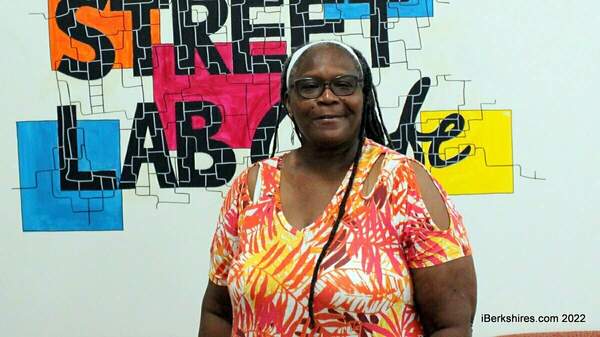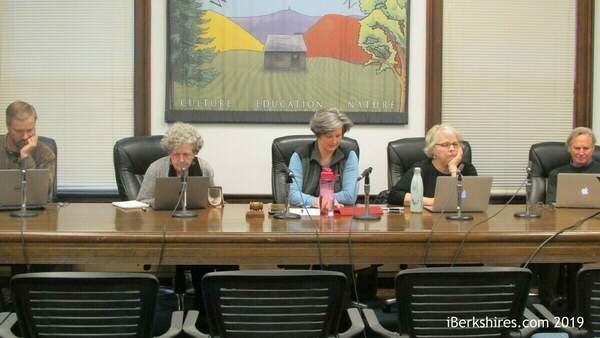Williamstown Author Releases Latest Historical Mystery Novel
 Charles O'Brien released his 15th mystery novel, set in 19th century New York, last week. Charles O'Brien released his 15th mystery novel, set in 19th century New York, last week. |
WILLIAMSTOWN, Mass. — When Charles O'Brien retired in 1994 after teaching and researching history for 30 years, he wanted to keep his interest in history alive.
"I decided to be a historical novelist. I was inspired by the work of historical novelist Miriam Grace Monfredo," O'Brien said as he sat in his comfortable home, where he lives with his wife, Elvy, an art historian. "To retool from my academic approach to history, I engaged a colleague in the English department (of Western Illinois University) to teach me creative writing."
With a knowledge of history and a talent for conjuring up murder mysteries, O'Brien has produced 11 historical mystery novels — the Anne Cartier series set in 18th-century France and England and the more locally located Gilded Age series consisting of "Death of a Robber Baron" (2013) and "Death in Saratoga Springs" (2014).
Now "Death at Tammany Hall," the latest in his 19th-century American series, was released by Kensington Publishing Corp. on June 30.
"Each of the novels can stand alone, be independent. It is the obligation of the author to connect present stories with past stories through back-reference main characters, but new characters may be introduced in each novel," the Williamstown author said. "All characters live in the context of their time. I do not contradict historical facts."
Question: Can you give a thumbnail description of "Death at Tammany Hall?"
Answer: New York, autumn 1894. Scandal rocks Tammany Hall, the Democratic Party's club in New Yoik City. Desperate to avoid prison, rogue party members resort to brutal intimidation and lethal violence to conceal evidence of their crimes. Despite the danger, private detective Pamela Thompson seeks justice for one of their victims, her partner, Harry Miller, wrongfully imprisoned for investigating Tammany's role in the murder of a witness.
Q: Is there any particular reason you chose female sleuths to be the chief protagonists in both the Anne Cartier series and the Gilded Age series?
A: I like to use women in that role. It's a challenge because they didn't get into professional investigative work until the late 1890s. Also, 80 percent of the readers of mysteries are women.
Q: Are all the characters in your novels fictitious ?
A: I do have some historical figures move in and out. And I modeled Pamela Thompson a bit after two historical women: Kate Warne and Nellie Bly.
Kate Warne was an investigator for Allen Pinkerton. She was a feisty widow who posed as a Southern belle or a man to get information.
Nellie Bly was an investigative journalist working for [Publisher] Joseph Pulitzer. That was impressive at that time. She suggested to Pulitzer that the facility for the insane on New York Citys Blackwell's Island — now Roosevelt Island — was deplorable. She proposed to go in as an inmate to investigate. She had to convince everyone she was insane. After 10 days, at the behest of Pultizer, she was released. She said she had enough information.
Q: How do you chose sites for your stories?
A: I chose sites that would be interesting to the reader and not too difficult for me to deal with as author.
Q: What gives you the most pleasure as a writer?
A: Much of the joy of writing is experiencing the places in which I set my novels. In first series, I set two stories in Bath, England. It was a joy to go there on two occasions for a month. Elvy and I walked seven to eight miles a day. The site speaks to you. It's a feeling you can't get in one or two days.
We stayed in University of Bath apartments. In summer they are rented out. The Crescent — a system of 30 rowhouses built in a semicircle — sort of looms over the town. One of the houses has been restored to its original appearance and has been turned into a museum — people dress in costumes of the 18th century.
Paris (setting of "Noble Blood" in the Ann Cartier series) is a favorite tourist destination. The whole city is a museum. They are very strict about conservation and historical preservation. The motive is to keep Paris as it was.
The hospital Salpêtrière had a lot of things I wanted in writing "Cruel Choices" (sixth of the nine novels in the Cartier series) Built by Louis XIV, it is an example of Baroque Classic architecture. It was huge and beautiful, but it did not offer cures or treatments. It just provided a place to get the sick, the poor and prostitutes off the street. I used Versailles Palace, outside the city, in "Noble Blood." Even today you experience it as something like the (U.S.) Capitol, as a symbol of political authority. The ging had authority on how justice was administered, made and broke laws, put people in jail ... .
My experience with Saratoga Springs goes back to 1965 when I started teaching at Skidmore [College.] At the time, Saratoga Springs was at a low point in its history — reform in Albany had taken away gambling and people's taste in vacation sites was changing. Saratoga Springs lost its appeal. With the decline in the town's economy, electrical utilities were not being adequately maintained and there were 12 fires in the time I was living there. In a major fire, the hotel, the concert center and a block of small business were destroyed. Then they had a renaissance — state came up with some money to rebuild. Saratoga Performing Arts Center — similar to Tanglewood — is a big draw in summer, and Saratoga Race Way, the oldest race track in the country, is intact.
About 2012-2013, I revisited the museum and other historical sites. The Episcopal Church has a small part in novel. The site came back to me as a novelist when I was in the library. They recently built a marvelous local history department packed with all kind of souveniers, including photos of the Saratoga hotels, mansions and various street scenes I needed to recreate in my mind.
Q: How much time do you giving to the writing process?
A: I write a few hours in the morning. My most productive time is from about 7 to 9 p.m. After 9, my wife and I play Scrabble. It takes my mind off the story.
Q: Have you started working on a new story?
A: I'm developing a medical story. Malpractice began to be a problem in the 1890s. There was a lack of control. The Medical Association did not have enough authority to hold doctors to standards and some were nothing more than hacks.
The novel could stand alone or could be a continuation of the Gilded Age series.
Q: Have you included any romance in the Gilded Age series?
A: Yes, in the three books with a relationship between Pamela Thompson and Jeremiah Prescott, her lawyer who hires her as a private investigator, each novel brings them a bit closer.
More on O'Brien mystery novels can be found on his website.
Tags: authors, mystery, Q&A,















